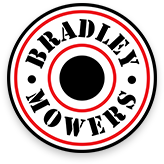A sulky is a stand attached to a lawnmower that you ride on as you mow the lawn. It is used for walk-behind or push-style lawnmowers.
How Is It Used?
You will need to attach the sulky to the back of your lawnmower. Depending on the type, you will either sit or stand on it as you mow your lawn. If lawn mowing is not an activity you enjoy, a sulky may be just what you need. In addition to ensuring you mow the lawn faster, it will significantly reduce the exhaustion you feel after pushing your machine around. You can detach the sulky whenever you need to.
What Types Are Available?
There are three types of sulkies for lawn mowers. The single wheel sulky is fitted with one wheel at the center of the platform you stand on. Even though it is quite simple in design and highly functional, it is more prone to accidents compared to the other two. It is also quite difficult to use on a steep slope due to stability issues.
On the other hand, the dual wheel sulky is fitted with two wheels, strategically below each foot on the platform. Thanks to the two wheels, it is more stable, hence more reliable than the single wheel sulky. However, you will have twice as many wheels to worry about in terms of maintenance, which is expensive in the long run.
The third type, which is quite rare, is the platform style sulky which has no wheels. It is made in such a way that it slides across the lawn as you mow. It is the most convenient type because of its stability. Additionally, the cost of maintenance is low because it has no wheels. Though rare, it is the most affordable among the three types. The only disadvantage is that you cannot ride it on the pavement.
What Brands Can I Look Out For?
The most common brands of Sulkies are from Velke, Oregon, and Bradley. These companies mainly deal with wheeled Sulkies. The platform Sulkies are majorly manufactured by Novae Corp.
Regardless of the brand, you settle on, there are several factors you need to consider when buying a sulky. For instance, you need to ensure you buy a good quality sulky based on the materials used in construction, the quality of the suspensions, how easy it is to attach to the lawnmower, and how close the controls are to you you have mounted. You will also need to get a sulky that auto retracts from the mower to ensure easy storage.
It is important to ascertain that the mower can handle the additional weight brought about by the sulky. While you’re at it, check the suggested weight of the rider for purposes of safety.
Bottom Line
A sulky is a very convenient tool if you have a lot of lawn mowing to do. Remember not to ride barefoot and ensure you maintain the highest level of safety by inspecting the sulky before every use.
